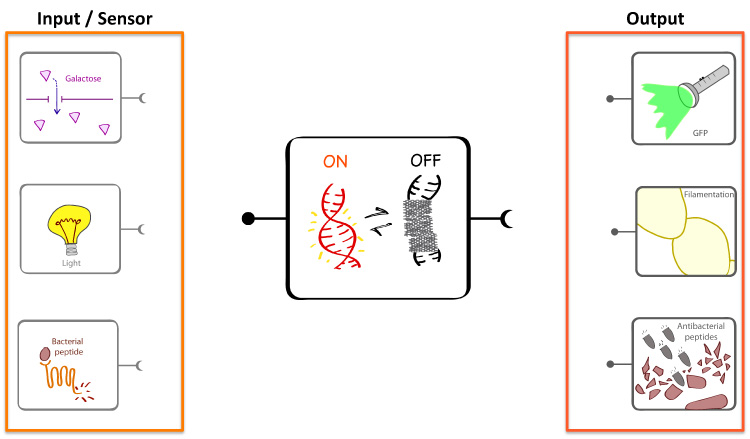Team:UCSF/Higher order systems
From 2008.igem.org
The development and characterization of the chromatin bit took most of the summer, and now we are looking forward to the many possibilities that could be engineered using our synthetic chromatin system. As a novel mode of gene regulation, the chromatin bit has extremely wide utility. In our experiments we used galactose as an input to silence the expression of GFP (our output). In theory, almost any type of input could be connected to our synthetic chromatin bit to control a wide range of outputs. The modularity and unique characteristics of the chromatin bit should allow a transient input to induce a long-term change, like differentiation. Cellular Memory could be encoded in the form of Chromatin remodeling.
Here are some of the inputs and outputs we started connecting to the chromatin bit:
Other inputs besides galactose: (1) light-induced dimerization of LexADBD and Sir2 (light sensor) and (2) Human GPCR that is activated by bacterial peptides (bacterial sensor).
Other outputs besides silencing of GFP expression: (1) production and secretion of antibacterial peptides and (2) yeast induced filamentation.
The combinations we were thinking of creating were a Light-induced Yeast Filamentation and a Yeast Immmune System. We are looking forward to discussing potential application with you at iGEM in November!
| Home | The Team | The Project | Parts Submitted to the Registry | Modeling | Human Practices | Notebooks |
|---|
 "
"
